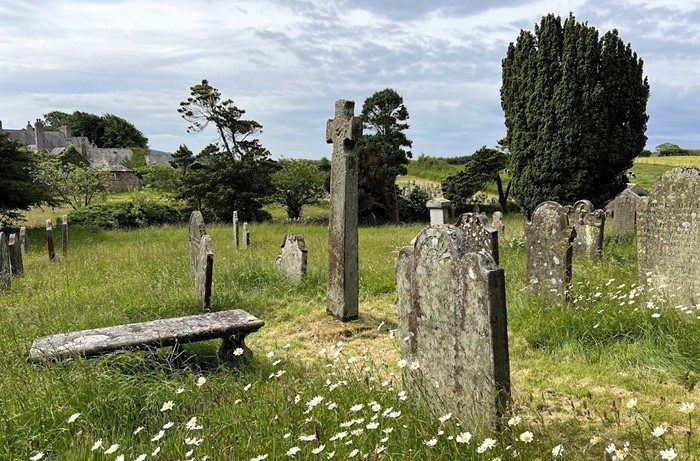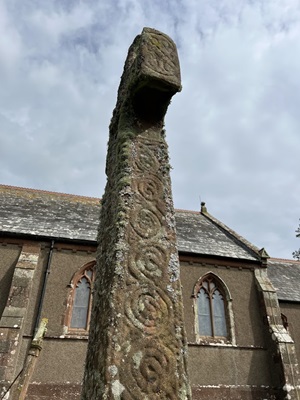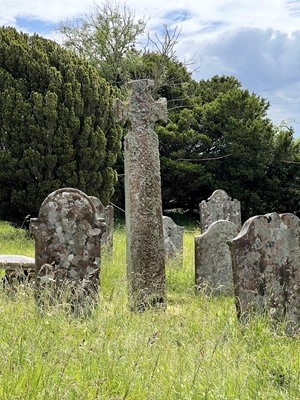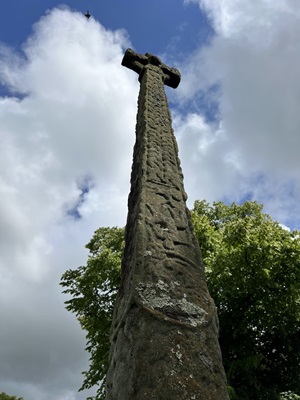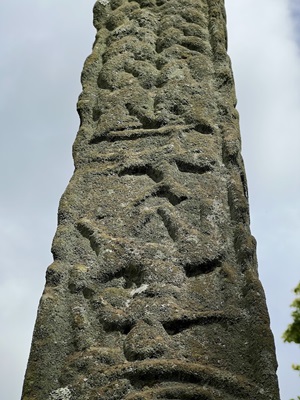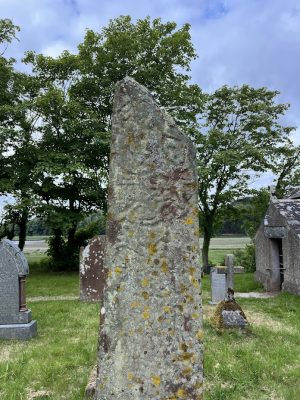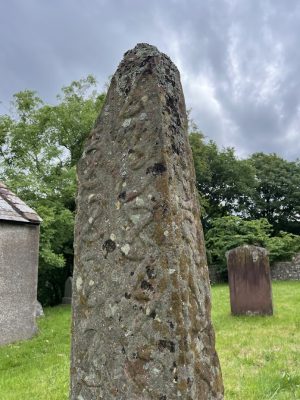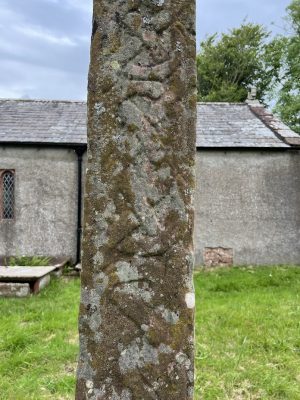The coastal towns and villages of Cumbria, famed for their beauty, have long grasped the attention of historians and archaeologists for a different reason. Throughout the Early Middle Ages both Anglo-Saxons and Vikings would call Cumbria home. The archaeology of their settlements, culture and interaction provides us as historians with a treasure trove of information with which to try and piece together an image of medieval Cumbria. Particularly in the ninth and tenth centuries it is possible to identify a level of cross-culturalism between the Anglo-Saxons and their Norse neighbours. In fact, the most interesting way we can trace these connections is through the symbols of culture which remain in existence today. Namely, the stunning and ever-intriguing stone crosses which dot the Cumbrian coastline. Some of the finest examples we can still see today, and which are definitely worth a visit on a tour of the coast are Irton, Gosforth and Waberthwaite. But these three examples are not of interest just because of their individual quality as objects to marvel at, taken together they tell a very interesting story of Cumbria’s Anglo-Saxon history.
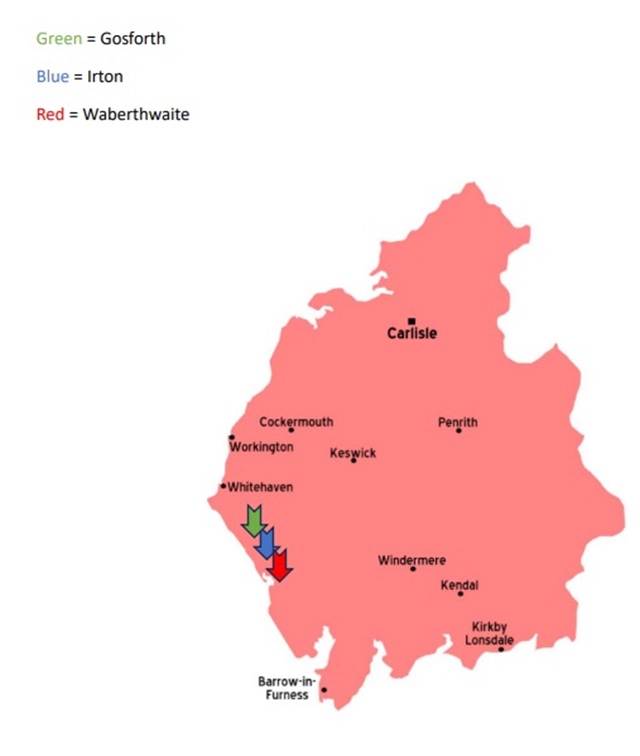
Irton Cross
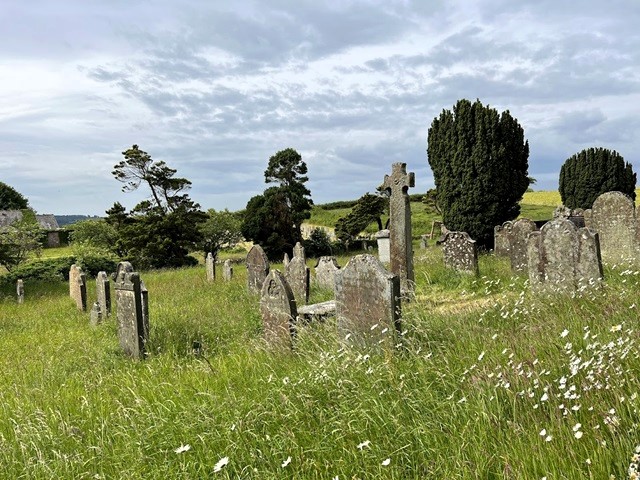
Irton Cross in the graveyard of St Paul’s Church, an isolated location between Santon Bridge and Holmrook (Cumbria) – Photos: GBC – June 2024
Irton Cross dates from the first half of the ninth century and can be located in the burial grounds of St Paul’s Church, Irton. Standing at an impressive 10ft tall, and in great condition, Irton Cross was carved from a single block of medium grained micaceous red sandstone. It is certainly one of the earliest examples of stone crosses from Cumbria but also one of the most ornate. Interestingly, in comparison to its contemporaries, Irton features no human figures, only geometric patterns. This makes it no less impressive however as its two broad faces and each of its narrow sides all feature extensive design work.
The west facing broad side features a cabled circle at the crosshead with five pellets enclosed within, themselves in the shape of a cross. Around the circle and stretching into the arms of the cross we find a thin stranded interlace pattern. The shaft is edged by a four chord interlace pattern and features two large panels divided by a section of three smooth rectangles, apparently for an inscription. The larger panels are decorated by Celtic inspired knots and interlacing.
The east facing broad side also has an intricate shaft section featuring from top to bottom; a chequered panel, a panel of key pattern, a spiraliform cross, a section of key pattern and another spiraliform cross, this time with projecting lines to each corner.
A stunning example of Anglo-Saxon carving, Irton cross is thought to mark the junction between four ancient roads.
Gosforth Cross
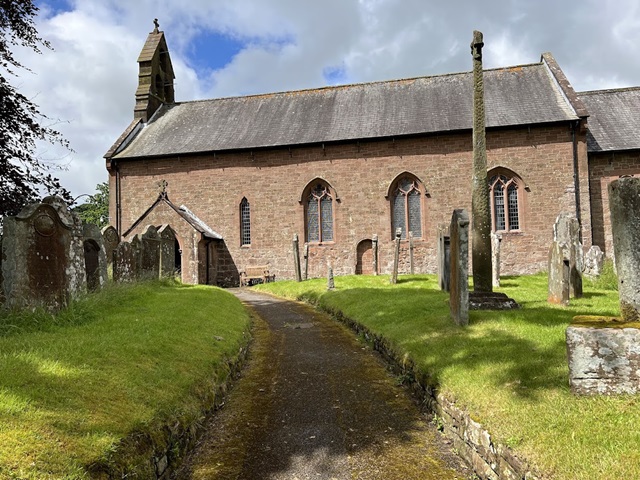
St Mary’s Churchyard – Gosforth Cross – Photos: GBC June 2024
Gosforth Cross has been dated to around the same time as Irton, although some archaeologists suggest a later date closer to the middle of the ninth century. This example can be found in the churchyard of St Mary’s Gosforth and stands at a towering 14.5ft. Although this cross was not erected by Anglo-Saxons but rather Vikings it deserves a mention in this discussion of Cumbria’s coastal settlements. As previously mentioned, Cumbria was home to the Anglo-Saxons and Vikings at various points throughout this period of English history. The inclusion of Christian symbology to this column which is decorated predominantly in Norse mythological scenes may provide an insight into how these two cultures began to communicate with one another. By the ninth century the Christianisation of the Norse settlers was well under way and this cross serves as an example of the fusion of two belief systems as the Norsemen sought to find a place for Christian figures in their conception of the universe.
The head of the structure consists of a central boss with a triquetra in each arm of the cross. The shaft is a slender four-sided column with depictions on each face. The most notable of which are:
- Loki bound while his wife Sigyn, stood beside him, catches the venom of a serpent in a horn.
- Heimdallr holding back the beasts of Loki’s army while preparing to blow his great horn.
- The god Vidarr battling Fenris the wolf by prying open his jaws.
- Thor and Hymir attempting to catch Jormungandr the World Serpent.
- Christ on the cross and the Crucifixion scene with what is perhaps Longinus and Mary Magdalene below.
Waberthwaite Cross
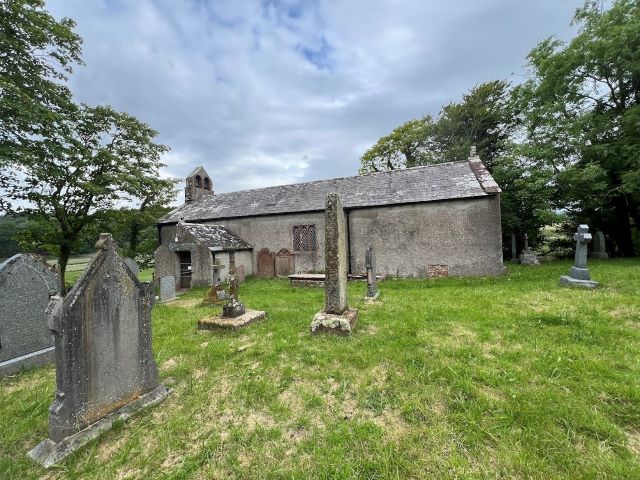
Waberthwaite Cross in Waberthwaite – St John’s Church Yard, Photos: GBC June 2024
Although Waberthwaite is the least complete of the three examples it is the perfect specimen with which to conclude. All that remains is 6.5ft of the cross-shaft and its base, like the others carved from red sandstone. Yet from this fragmentary evidence we can clearly see the culmination of this mingling between the Anglo-Saxon and Viking cultures that took place in the towns and settlements of Cumbria’s coast.
Similarly to Irton’s Anglo-Saxon Cross, Waberthwaite has two broad faces and two narrow sides. The decorative patterns on its broadside panels are very common of Viking ornamentation. For example, the bifurcating and closed circuit interlace, or the irregular interlace binding a prancing animal. However, despite the clear Viking period evidence there are signs of an earlier Anglo-Saxon influence. Namely, the basic animal motifs such as winged birds and animals whose lower bodies morph into interlace. Such carvings were well established in the art of the Anglo-Saxon kingdom of Mercia during the previous century. This would suggest then that the proximity of these two peoples had led to a degree of cross-culturalism and a shared appreciation for each other’s art and beliefs.
Thoughts…
In summary, these iconic and interesting symbols not only serve as a reminder of the Anglo-Saxon presence on Cumbria’s west coast but as evidence for an interweaving of cultures. The earliest surviving cross at Irton provides an excellent example of Anglian art and the significance of the location to the Anglo-Saxon people as a meeting of trackways through their lands. Gosforth Cross then provides us with a marker of the Viking presence in Cumbria around the same time and the effect their Christian neighbours were having on their own cultural beliefs. Finally, the much later Waberthwaite cross reveals to us the culmination of Viking and Anglo-Saxon co-habitation in the towns and villages of the Cumbrian coast with shared artforms.
Overall, the stone crosses of Cumbria’s coast can reveal much about the relationship between its inhabitants in the early medieval period and how cultural factors such as religion and art could be shared and appreciated.
Written by C. James McPherson MA MSc.

